What Are Content Delivery Networks & How Can They Impact Your Site?
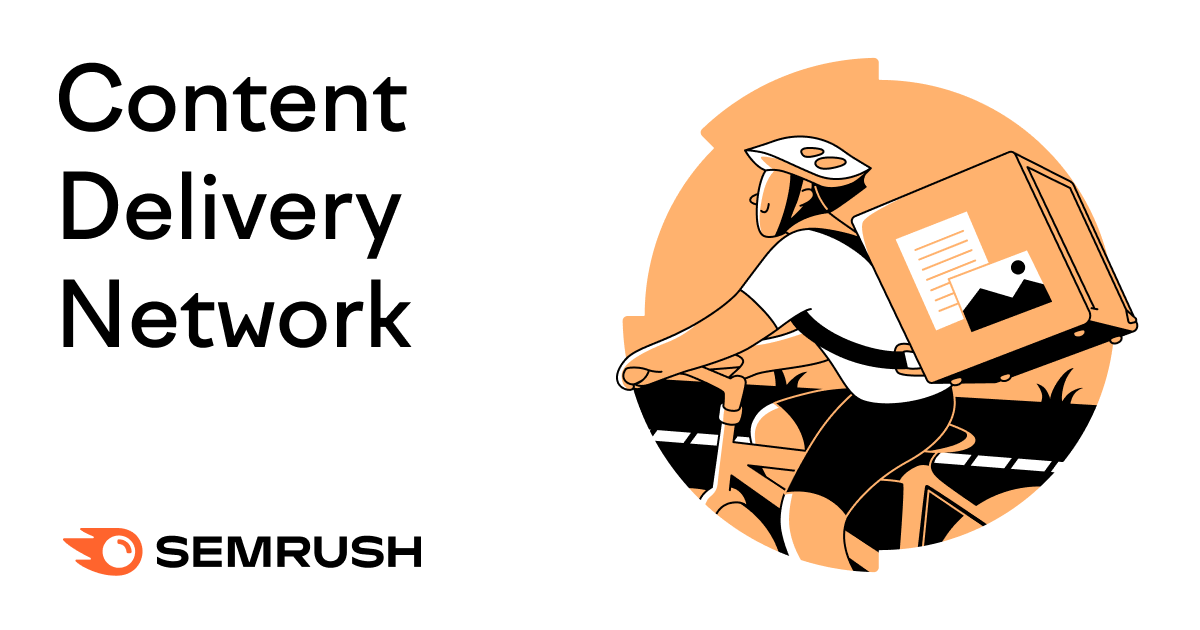
Thanks to Google’s Core Web Vitals update, page load speed has become an important factor with SEO. One of the ways you can improve your web pages’ page load speed is through the rapid loading of images and other content.
A content delivery network (CDN) is a great way to upload content quickly and upon request.
What Is a CDN (Content Delivery Network)?
A CDN is a network of computer servers located at different geographic locations around the world. A CDN’s location allows them to distribute content to their target location faster. For example, you can load content from a US server if you’re in the USA faster than from a server-based in Europe.
CDNs load web page assets like images and videos. A properly configured and secured CDN can also help protect against cyber-attacks, including DDOS attacks.
CDNs aren’t a replacement for web hosting. Instead, they help web hosts cache content so hosts can load assets with less bandwidth.
How Do CDNs Work?
CDNs can read your IP address and determine your location on the network. When a user loads a web page, the closest CDN sends a cached version of the web page’s content through to the user’s web browser.
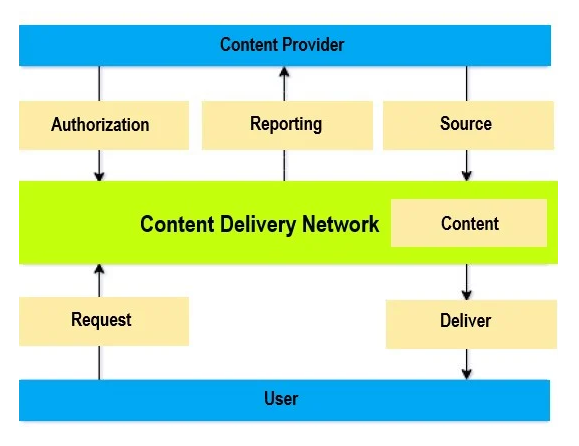
Loading the cached version web page can decrease your page load speed and increase your users’ experience. It’s common for webmasters to use multiple CDNs in different regions to serve users across the world.
How CDNs improve network performance
The diagram below illustrates a common problem solved with a CDN. A user in Asia is trying to access data hosted on a server in the United States. Due to his location, it will take 3 seconds for the data to reach him — that’s quite a long time on the Internet.
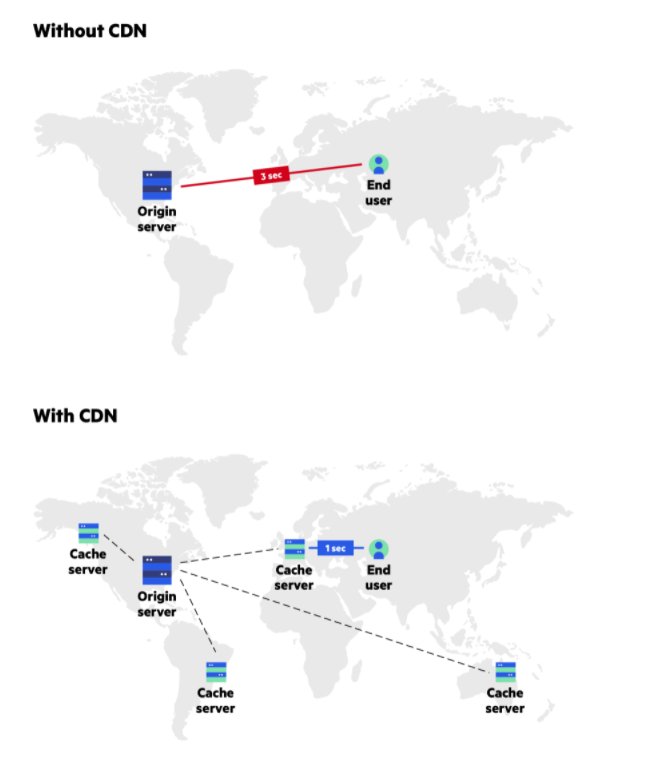
When using a cached server in Europe, the user in Asia can access the content in 1 second. Not only does this speed up the download times and the user experience, but it also keeps the network lines free from unnecessary traffic, making it faster and more efficient.
What Is a CDN Provider?
A CDN provider is a company with data centers across the world. Providers store cached versions of your content in these data servers, then load the content for the user upon request.
Well-known CDN providers include Slackpath, Cloudflare, and Rackspace. Check out Wpforms for a top ten list of CDNs they’ve reviewed.
Key Benefits of CDNs
- Improve page load times: CDNs are distributed globally to reduce the physical distance between a user and the web host. Less travel time for the data means faster load times on the web page. Additionally, you can avoid traffic jams and hold-ups due to distance and constant access requests.
- Improve Core Web Vitals metrics: Core Web Vitals weigh your website’s speed against your SEO ranking. You can use a CDN to reduce loading times, which can improve your user experience and impact your ranking.
- Reduce bandwidth costs: With CDNs in place, your web host doesn’t have to load all of the content all of the time, saving time and money spent on bandwidth.
How Do I Add a CDN to My Website?
- Research which CDN you want to use. Consider important factors like security history, technical specifications, and pricing.
- Set up your account. Follow the guidelines included with your preferred CDN. For our example, we’ll be working with Cloudflare.
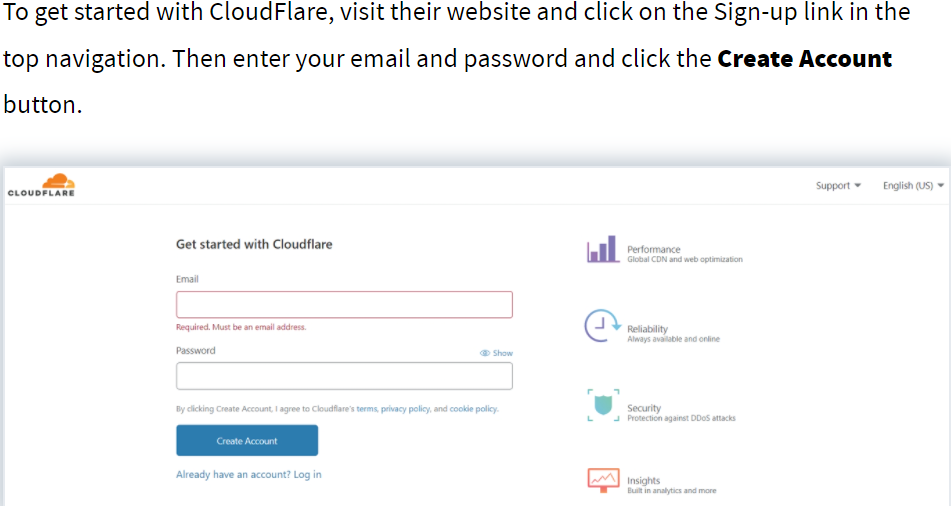
- Add your website domain. Your CDN will collect and cache your content, then share it through the network.

- Change your nameservers. When your nameserver changes, the Internet searches for new nameservers to update the information they have on your domain, like web and email addresses. Your CDN will likely provide instructions on how to update your nameservers. In our example below, Cloudflare shares step-by-step instructions on changing your nameservers:
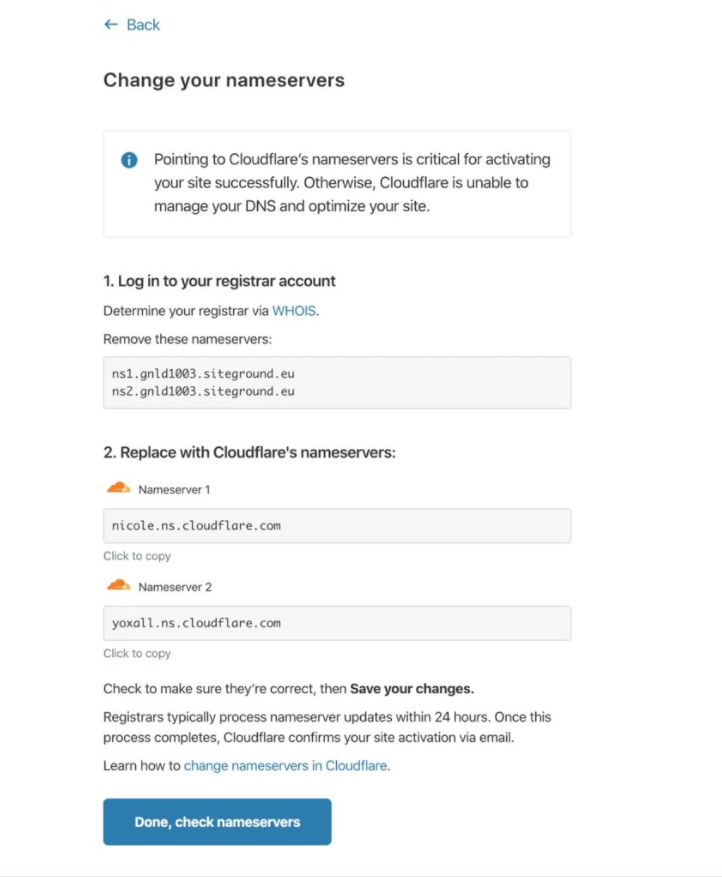
CDN Security Best Practices
Information security is a useful benefit of working with a CDN. You can keep your CDNs and site secured with updated TLS and SSL certificates. A well-maintained CDN can add an extra layer of security and encryption.
However, CDNs alone cannot stop bots or malware from infecting your website. If not properly secured, a vulnerable CDN can be hijacked to send malware to users across the network.
When selecting a CDN, research its security history, and review documentation to ensure you understand how the CDN works.
Things to consider when selecting a CDN:
- How often is the data cached?
- How often does the company perform security checks?
- Do they have any documentation to tell you what happens if there is a security breach?
- What happens if a server fails, do they have redundancies?
You’ll be investing money into a CDN service, so it’s best to maintain a good idea of how your service works.
Alternative Methods to Improving Site Performance
CDNs are an excellent step to reducing your web pages’ load speeds. If your website is larger or stores a ton of content, a CDN network can make a huge difference to and for your users.
However, sometimes longer page load speeds are the result of multiple factors. Before you turn to a CDN, it can be helpful to fix any site issues impacting your page load speed like poor implementation, minified CSS, or large HTML page size.
The Site Audit tool’s Site Performance thematic report measures your average page load speed and indicates any site issues impacting it. The tool also provides a list of issues affecting your site’s general performance, as well as recommendations on how to fix each error.
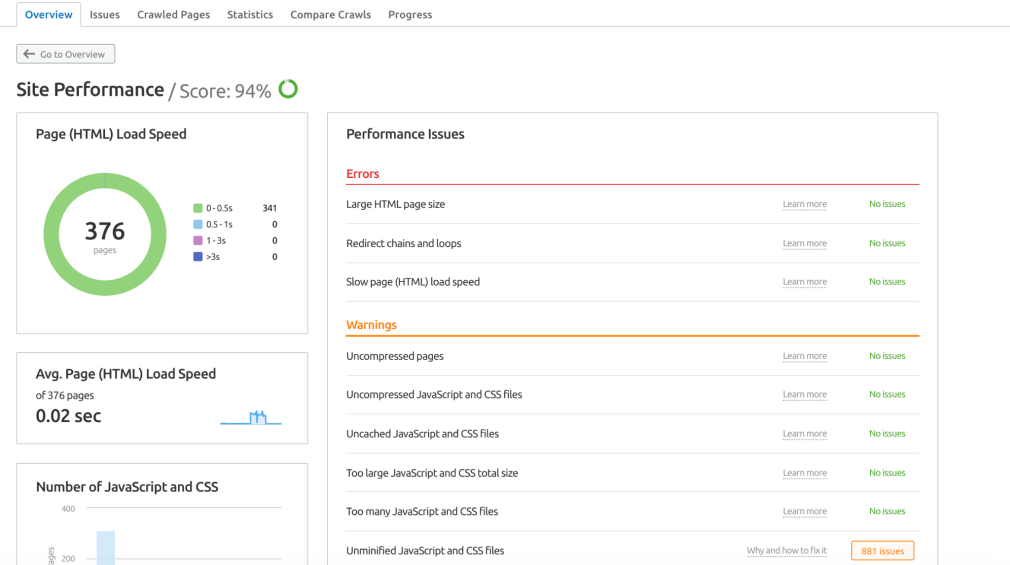
It’s important to note that some CDNs can block the Site Audit’s crawlers, so it might be useful to run an audit before utilizing your CDN. Common CDNs that block the Site Audit crawlers include Cloudflare, Imperva, ModSecurity, and Sucuri.
Find and Fix Sitemap Errors
with the Site Audit Tool

Final Thoughts
With remote work becoming more available and internet use increasing, CDNs will become even more essential for businesses looking to increase their reach and global audience. Faster loading times improve your users’ experience, enticing them to return for the products, services, or information they need.
By reducing page load speed, CDNs are a great asset to your overall business and SEO strategy. Even if you’re not ready to use one of your own, you can always benefit from finding alternative ways to reduce your page load speed.
Source link : Semrush.com



